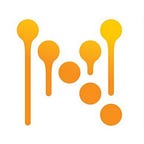Induced pluripotent stem cells and their potential in cell-based therapies
Author: Bhargavi Ajgaonkar (Research Scholar, Institute of Chemical Technology)
Advances in cell replacement therapy and regenerative medicine are increasingly becoming popular as research explores their superior potential and high versatility. Pluripotent Stem Cells (PSCs) can be differentiated into cells from all three germ layers and reproduce indefinitely, thereby becoming the desirable cell sources for cell therapies against numerous illnesses and injuries. Induced Pluripotent Stem Cells (iPSCs) are one of two forms of human PSCs (hPSCs) being investigated for clinical use, that share their regenerative properties with embryonic stem cells (ESCs). Mouse iPSCs from the mouse fibroblast were first reported in 2006 by the Yamanaka and Takahashi in Yamanaka Lab at Kyoto University and were first independently produced by Yamanaka’s and Thomson’s group in 2007. These iPSCs were generated from mouse embryonic and adult fibroblasts, by reprogramming them into cells with ESCs characteristics, via overexpression of a defined set of transcription factors (Oct4, Sox, Klf 4, and C-Myc), also known as Yamanaka factors.
Various approaches have been introduced to induce pluripotency in somatic cells, which can be categorized as integrative and non-integrative approaches. The former involves the insertion of foreign DNA sequences encoding reprogramming factors into the genome of the starting cells while the latter obviates any permanent genetic modification.
Unlike ESCs, which are associated with immense ethical and safety concerns in terms of personhood, human dignity, safety concerns with procurement of cells from a human embryo, and further health risks of immune rejection, iPSCs provide a viable alternative. iPSCs are derived from somatic cells either from autologous or allogenic sources and thereby prevent the use of human embryos and minimize the risk of immune rejection.
Even while iPSCs have only been around for a small duration, as of December 2020, over twenty clinical trials had been publicly proclaimed as either finished or ongoing, one of which used MSCs derived iPSCs to treat COVID-19. The first pathology for which iPSC-derived cell transplantation into humans was authorized was age-related macular degeneration (AMD). To date, degenerative eye disorders are most frequently targeted in iPSC-based clinical trials, however, other disorders like cardiac syndromes such as heart failure and myocardial ischemia, thrombocytopenia from aplastic anaemia, and neuropathies like Parkinson’s disease, spinal cord injury and thrombocytopenia are also being considered for iPSC mediated alleviation.
Overall, we can say that the potential of iPSCs in cell therapies and other applications is enormous. Recently, cell therapies for more than 14 disorders and injuries have reached or are about to reach clinical trials. Furthermore, the sophisticated application of HPSCs technology like the use of differentiated hemopoietic stem cells derived from PSCs for leukaemia and several blood disorders and the construction of kidney and liver organoids is also making progress. However, much work is still warranted for understanding the epigenetic alteration and transcriptional activity associated with induction and differentiation for an efficient generation of cells and their application in clinical therapy. Also addressing major challenges associated with tumorigenicity, immunogenicity and heterogeneity will aid in developing safer iPSCs for the treatment of severe difficult-to-treat diseases.
This is just a small drop from the ocean of knowledge available in this growing sector.
Join Biosimilar Workshop 2023 to dive deeper into this ocean with experts and leaders of the biopharma industry.
Registration link:
https://bit.ly/Registration2023GOA
Visit Website:
